Drug Development
Toxicology
Clinical Trials
Disease Research
Physiological Simulation
Pharmacokinetic Simulation
Pharmacodynamic Simulation
Molecular Simulation
Pharmaceutical Companies
Biotechnology Companies
Academic Research Institutions
Contract Research Organizations
On-Premises Software
Cloud-Based Software
North America
Europe
South America
Asia Pacific
Middle East and Africa
North America Outlook (USD Billion, 2019-2035)
North America Biosimulation Market by Application Type
Drug Development
Toxicology
Clinical Trials
Disease Research
North America Biosimulation Market by Simulations Type
Physiological Simulation
Pharmacokinetic Simulation
Pharmacodynamic Simulation
Molecular Simulation
North America Biosimulation Market by End User Type
Pharmaceutical Companies
Biotechnology Companies
Academic Research Institutions
Contract Research Organizations
North America Biosimulation Market by Software Type
On-Premises Software
Cloud-Based Software
North America Biosimulation Market by Regional Type
US
Canada
US Outlook (USD Billion, 2019-2035)
US Biosimulation Market by Application Type
Drug Development
Toxicology
Clinical Trials
Disease Research
US Biosimulation Market by Simulations Type
Physiological Simulation
Pharmacokinetic Simulation
Pharmacodynamic Simulation
Molecular Simulation
US Biosimulation Market by End User Type
Pharmaceutical Companies
Biotechnology Companies
Academic Research Institutions
Contract Research Organizations
US Biosimulation Market by Software Type
On-Premises Software
Cloud-Based Software
CANADA Outlook (USD Billion, 2019-2035)
CANADA Biosimulation Market by Application Type
Drug Development
Toxicology
Clinical Trials
Disease Research
CANADA Biosimulation Market by Simulations Type
Physiological Simulation
Pharmacokinetic Simulation
Pharmacodynamic Simulation
Molecular Simulation
CANADA Biosimulation Market by End User Type
Pharmaceutical Companies
Biotechnology Companies
Academic Research Institutions
Contract Research Organizations
CANADA Biosimulation Market by Software Type
On-Premises Software
Cloud-Based Software
Europe Outlook (USD Billion, 2019-2035)
Europe Biosimulation Market by Application Type
Drug Development
Toxicology
Clinical Trials
Disease Research
Europe Biosimulation Market by Simulations Type
Physiological Simulation
Pharmacokinetic Simulation
Pharmacodynamic Simulation
Molecular Simulation
Europe Biosimulation Market by End User Type
Pharmaceutical Companies
Biotechnology Companies
Academic Research Institutions
Contract Research Organizations
Europe Biosimulation Market by Software Type
On-Premises Software
Cloud-Based Software
Europe Biosimulation Market by Regional Type
Germany
UK
France
Russia
Italy
Spain
Rest of Europe
GERMANY Outlook (USD Billion, 2019-2035)
GERMANY Biosimulation Market by Application Type
Drug Development
Toxicology
Clinical Trials
Disease Research
GERMANY Biosimulation Market by Simulations Type
Physiological Simulation
Pharmacokinetic Simulation
Pharmacodynamic Simulation
Molecular Simulation
GERMANY Biosimulation Market by End User Type
Pharmaceutical Companies
Biotechnology Companies
Academic Research Institutions
Contract Research Organizations
GERMANY Biosimulation Market by Software Type
On-Premises Software
Cloud-Based Software
UK Outlook (USD Billion, 2019-2035)
UK Biosimulation Market by Application Type
Drug Development
Toxicology
Clinical Trials
Disease Research
UK Biosimulation Market by Simulations Type
Physiological Simulation
Pharmacokinetic Simulation
Pharmacodynamic Simulation
Molecular Simulation
UK Biosimulation Market by End User Type
Pharmaceutical Companies
Biotechnology Companies
Academic Research Institutions
Contract Research Organizations
UK Biosimulation Market by Software Type
On-Premises Software
Cloud-Based Software
FRANCE Outlook (USD Billion, 2019-2035)
FRANCE Biosimulation Market by Application Type
Drug Development
Toxicology
Clinical Trials
Disease Research
FRANCE Biosimulation Market by Simulations Type
Physiological Simulation
Pharmacokinetic Simulation
Pharmacodynamic Simulation
Molecular Simulation
FRANCE Biosimulation Market by End User Type
Pharmaceutical Companies
Biotechnology Companies
Academic Research Institutions
Contract Research Organizations
FRANCE Biosimulation Market by Software Type
On-Premises Software
Cloud-Based Software
RUSSIA Outlook (USD Billion, 2019-2035)
RUSSIA Biosimulation Market by Application Type
Drug Development
Toxicology
Clinical Trials
Disease Research
RUSSIA Biosimulation Market by Simulations Type
Physiological Simulation
Pharmacokinetic Simulation
Pharmacodynamic Simulation
Molecular Simulation
RUSSIA Biosimulation Market by End User Type
Pharmaceutical Companies
Biotechnology Companies
Academic Research Institutions
Contract Research Organizations
RUSSIA Biosimulation Market by Software Type
On-Premises Software
Cloud-Based Software
ITALY Outlook (USD Billion, 2019-2035)
ITALY Biosimulation Market by Application Type
Drug Development
Toxicology
Clinical Trials
Disease Research
ITALY Biosimulation Market by Simulations Type
Physiological Simulation
Pharmacokinetic Simulation
Pharmacodynamic Simulation
Molecular Simulation
ITALY Biosimulation Market by End User Type
Pharmaceutical Companies
Biotechnology Companies
Academic Research Institutions
Contract Research Organizations
ITALY Biosimulation Market by Software Type
On-Premises Software
Cloud-Based Software
SPAIN Outlook (USD Billion, 2019-2035)
SPAIN Biosimulation Market by Application Type
Drug Development
Toxicology
Clinical Trials
Disease Research
SPAIN Biosimulation Market by Simulations Type
Physiological Simulation
Pharmacokinetic Simulation
Pharmacodynamic Simulation
Molecular Simulation
SPAIN Biosimulation Market by End User Type
Pharmaceutical Companies
Biotechnology Companies
Academic Research Institutions
Contract Research Organizations
SPAIN Biosimulation Market by Software Type
On-Premises Software
Cloud-Based Software
REST OF EUROPE Outlook (USD Billion, 2019-2035)
REST OF EUROPE Biosimulation Market by Application Type
Drug Development
Toxicology
Clinical Trials
Disease Research
REST OF EUROPE Biosimulation Market by Simulations Type
Physiological Simulation
Pharmacokinetic Simulation
Pharmacodynamic Simulation
Molecular Simulation
REST OF EUROPE Biosimulation Market by End User Type
Pharmaceutical Companies
Biotechnology Companies
Academic Research Institutions
Contract Research Organizations
REST OF EUROPE Biosimulation Market by Software Type
On-Premises Software
Cloud-Based Software
APAC Outlook (USD Billion, 2019-2035)
APAC Biosimulation Market by Application Type
Drug Development
Toxicology
Clinical Trials
Disease Research
APAC Biosimulation Market by Simulations Type
Physiological Simulation
Pharmacokinetic Simulation
Pharmacodynamic Simulation
Molecular Simulation
APAC Biosimulation Market by End User Type
Pharmaceutical Companies
Biotechnology Companies
Academic Research Institutions
Contract Research Organizations
APAC Biosimulation Market by Software Type
On-Premises Software
Cloud-Based Software
APAC Biosimulation Market by Regional Type
China
India
Japan
South Korea
Malaysia
Thailand
Indonesia
Rest of APAC
CHINA Outlook (USD Billion, 2019-2035)
CHINA Biosimulation Market by Application Type
Drug Development
Toxicology
Clinical Trials
Disease Research
CHINA Biosimulation Market by Simulations Type
Physiological Simulation
Pharmacokinetic Simulation
Pharmacodynamic Simulation
Molecular Simulation
CHINA Biosimulation Market by End User Type
Pharmaceutical Companies
Biotechnology Companies
Academic Research Institutions
Contract Research Organizations
CHINA Biosimulation Market by Software Type
On-Premises Software
Cloud-Based Software
INDIA Outlook (USD Billion, 2019-2035)
INDIA Biosimulation Market by Application Type
Drug Development
Toxicology
Clinical Trials
Disease Research
INDIA Biosimulation Market by Simulations Type
Physiological Simulation
Pharmacokinetic Simulation
Pharmacodynamic Simulation
Molecular Simulation
INDIA Biosimulation Market by End User Type
Pharmaceutical Companies
Biotechnology Companies
Academic Research Institutions
Contract Research Organizations
INDIA Biosimulation Market by Software Type
On-Premises Software
Cloud-Based Software
JAPAN Outlook (USD Billion, 2019-2035)
JAPAN Biosimulation Market by Application Type
Drug Development
Toxicology
Clinical Trials
Disease Research
JAPAN Biosimulation Market by Simulations Type
Physiological Simulation
Pharmacokinetic Simulation
Pharmacodynamic Simulation
Molecular Simulation
JAPAN Biosimulation Market by End User Type
Pharmaceutical Companies
Biotechnology Companies
Academic Research Institutions
Contract Research Organizations
JAPAN Biosimulation Market by Software Type
On-Premises Software
Cloud-Based Software
SOUTH KOREA Outlook (USD Billion, 2019-2035)
SOUTH KOREA Biosimulation Market by Application Type
Drug Development
Toxicology
Clinical Trials
Disease Research
SOUTH KOREA Biosimulation Market by Simulations Type
Physiological Simulation
Pharmacokinetic Simulation
Pharmacodynamic Simulation
Molecular Simulation
SOUTH KOREA Biosimulation Market by End User Type
Pharmaceutical Companies
Biotechnology Companies
Academic Research Institutions
Contract Research Organizations
SOUTH KOREA Biosimulation Market by Software Type
On-Premises Software
Cloud-Based Software
MALAYSIA Outlook (USD Billion, 2019-2035)
MALAYSIA Biosimulation Market by Application Type
Drug Development
Toxicology
Clinical Trials
Disease Research
MALAYSIA Biosimulation Market by Simulations Type
Physiological Simulation
Pharmacokinetic Simulation
Pharmacodynamic Simulation
Molecular Simulation
MALAYSIA Biosimulation Market by End User Type
Pharmaceutical Companies
Biotechnology Companies
Academic Research Institutions
Contract Research Organizations
MALAYSIA Biosimulation Market by Software Type
On-Premises Software
Cloud-Based Software
THAILAND Outlook (USD Billion, 2019-2035)
THAILAND Biosimulation Market by Application Type
Drug Development
Toxicology
Clinical Trials
Disease Research
THAILAND Biosimulation Market by Simulations Type
Physiological Simulation
Pharmacokinetic Simulation
Pharmacodynamic Simulation
Molecular Simulation
THAILAND Biosimulation Market by End User Type
Pharmaceutical Companies
Biotechnology Companies
Academic Research Institutions
Contract Research Organizations
THAILAND Biosimulation Market by Software Type
On-Premises Software
Cloud-Based Software
INDONESIA Outlook (USD Billion, 2019-2035)
INDONESIA Biosimulation Market by Application Type
Drug Development
Toxicology
Clinical Trials
Disease Research
INDONESIA Biosimulation Market by Simulations Type
Physiological Simulation
Pharmacokinetic Simulation
Pharmacodynamic Simulation
Molecular Simulation
INDONESIA Biosimulation Market by End User Type
Pharmaceutical Companies
Biotechnology Companies
Academic Research Institutions
Contract Research Organizations
INDONESIA Biosimulation Market by Software Type
On-Premises Software
Cloud-Based Software
REST OF APAC Outlook (USD Billion, 2019-2035)
REST OF APAC Biosimulation Market by Application Type
Drug Development
Toxicology
Clinical Trials
Disease Research
REST OF APAC Biosimulation Market by Simulations Type
Physiological Simulation
Pharmacokinetic Simulation
Pharmacodynamic Simulation
Molecular Simulation
REST OF APAC Biosimulation Market by End User Type
Pharmaceutical Companies
Biotechnology Companies
Academic Research Institutions
Contract Research Organizations
REST OF APAC Biosimulation Market by Software Type
On-Premises Software
Cloud-Based Software
South America Outlook (USD Billion, 2019-2035)
South America Biosimulation Market by Application Type
Drug Development
Toxicology
Clinical Trials
Disease Research
South America Biosimulation Market by Simulations Type
Physiological Simulation
Pharmacokinetic Simulation
Pharmacodynamic Simulation
Molecular Simulation
South America Biosimulation Market by End User Type
Pharmaceutical Companies
Biotechnology Companies
Academic Research Institutions
Contract Research Organizations
South America Biosimulation Market by Software Type
On-Premises Software
Cloud-Based Software
South America Biosimulation Market by Regional Type
Brazil
Mexico
Argentina
Rest of South America
BRAZIL Outlook (USD Billion, 2019-2035)
BRAZIL Biosimulation Market by Application Type
Drug Development
Toxicology
Clinical Trials
Disease Research
BRAZIL Biosimulation Market by Simulations Type
Physiological Simulation
Pharmacokinetic Simulation
Pharmacodynamic Simulation
Molecular Simulation
BRAZIL Biosimulation Market by End User Type
Pharmaceutical Companies
Biotechnology Companies
Academic Research Institutions
Contract Research Organizations
BRAZIL Biosimulation Market by Software Type
On-Premises Software
Cloud-Based Software
MEXICO Outlook (USD Billion, 2019-2035)
MEXICO Biosimulation Market by Application Type
Drug Development
Toxicology
Clinical Trials
Disease Research
MEXICO Biosimulation Market by Simulations Type
Physiological Simulation
Pharmacokinetic Simulation
Pharmacodynamic Simulation
Molecular Simulation
MEXICO Biosimulation Market by End User Type
Pharmaceutical Companies
Biotechnology Companies
Academic Research Institutions
Contract Research Organizations
MEXICO Biosimulation Market by Software Type
On-Premises Software
Cloud-Based Software
ARGENTINA Outlook (USD Billion, 2019-2035)
ARGENTINA Biosimulation Market by Application Type
Drug Development
Toxicology
Clinical Trials
Disease Research
ARGENTINA Biosimulation Market by Simulations Type
Physiological Simulation
Pharmacokinetic Simulation
Pharmacodynamic Simulation
Molecular Simulation
ARGENTINA Biosimulation Market by End User Type
Pharmaceutical Companies
Biotechnology Companies
Academic Research Institutions
Contract Research Organizations
ARGENTINA Biosimulation Market by Software Type
On-Premises Software
Cloud-Based Software
REST OF SOUTH AMERICA Outlook (USD Billion, 2019-2035)
REST OF SOUTH AMERICA Biosimulation Market by Application Type
Drug Development
Toxicology
Clinical Trials
Disease Research
REST OF SOUTH AMERICA Biosimulation Market by Simulations Type
Physiological Simulation
Pharmacokinetic Simulation
Pharmacodynamic Simulation
Molecular Simulation
REST OF SOUTH AMERICA Biosimulation Market by End User Type
Pharmaceutical Companies
Biotechnology Companies
Academic Research Institutions
Contract Research Organizations
REST OF SOUTH AMERICA Biosimulation Market by Software Type
On-Premises Software
Cloud-Based Software
MEA Outlook (USD Billion, 2019-2035)
MEA Biosimulation Market by Application Type
Drug Development
Toxicology
Clinical Trials
Disease Research
MEA Biosimulation Market by Simulations Type
Physiological Simulation
Pharmacokinetic Simulation
Pharmacodynamic Simulation
Molecular Simulation
MEA Biosimulation Market by End User Type
Pharmaceutical Companies
Biotechnology Companies
Academic Research Institutions
Contract Research Organizations
MEA Biosimulation Market by Software Type
On-Premises Software
Cloud-Based Software
MEA Biosimulation Market by Regional Type
GCC Countries
South Africa
Rest of MEA
GCC COUNTRIES Outlook (USD Billion, 2019-2035)
GCC COUNTRIES Biosimulation Market by Application Type
Drug Development
Toxicology
Clinical Trials
Disease Research
GCC COUNTRIES Biosimulation Market by Simulations Type
Physiological Simulation
Pharmacokinetic Simulation
Pharmacodynamic Simulation
Molecular Simulation
GCC COUNTRIES Biosimulation Market by End User Type
Pharmaceutical Companies
Biotechnology Companies
Academic Research Institutions
Contract Research Organizations
GCC COUNTRIES Biosimulation Market by Software Type
On-Premises Software
Cloud-Based Software
SOUTH AFRICA Outlook (USD Billion, 2019-2035)
SOUTH AFRICA Biosimulation Market by Application Type
Drug Development
Toxicology
Clinical Trials
Disease Research
SOUTH AFRICA Biosimulation Market by Simulations Type
Physiological Simulation
Pharmacokinetic Simulation
Pharmacodynamic Simulation
Molecular Simulation
SOUTH AFRICA Biosimulation Market by End User Type
Pharmaceutical Companies
Biotechnology Companies
Academic Research Institutions
Contract Research Organizations
SOUTH AFRICA Biosimulation Market by Software Type
On-Premises Software
Cloud-Based Software
REST OF MEA Outlook (USD Billion, 2019-2035)
REST OF MEA Biosimulation Market by Application Type
Drug Development
Toxicology
Clinical Trials
Disease Research
REST OF MEA Biosimulation Market by Simulations Type
Physiological Simulation
Pharmacokinetic Simulation
Pharmacodynamic Simulation
Molecular Simulation
REST OF MEA Biosimulation Market by End User Type
Pharmaceutical Companies
Biotechnology Companies
Academic Research Institutions
Contract Research Organizations
REST OF MEA Biosimulation Market by Software Type
On-Premises Software
Cloud-Based Software
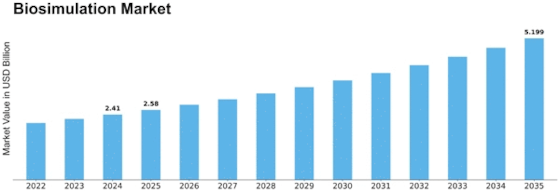

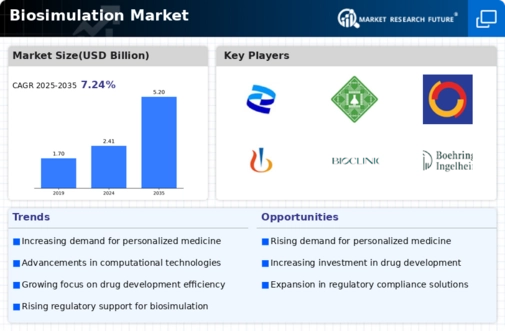
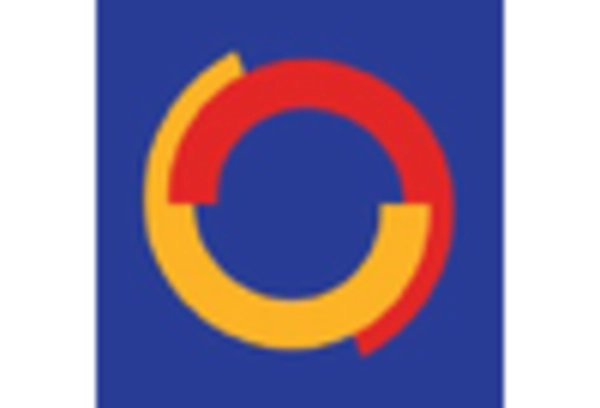
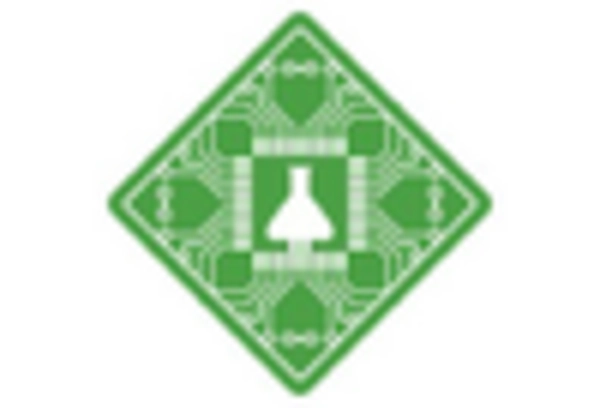
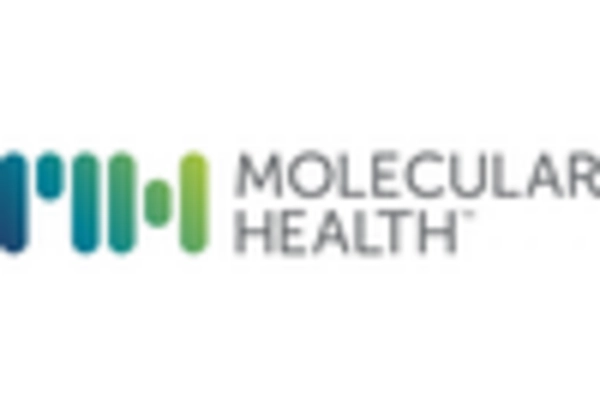
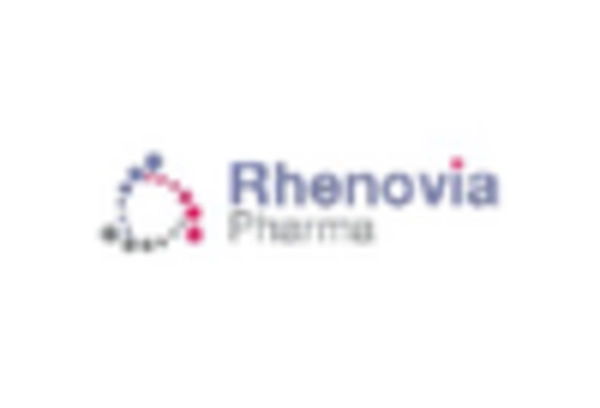
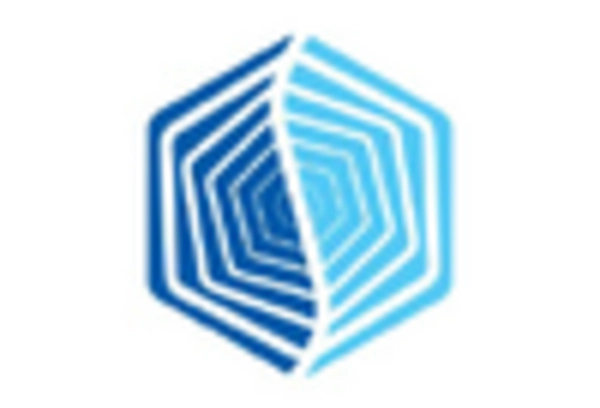
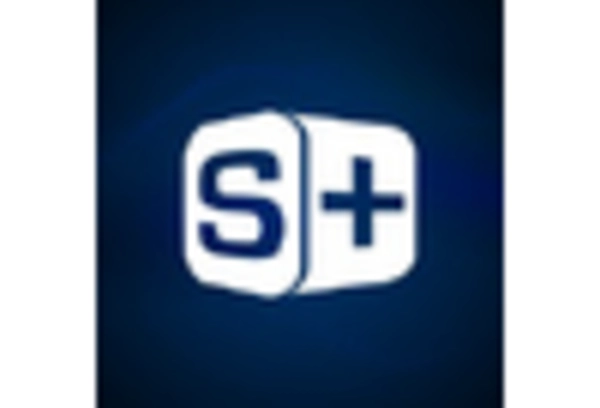









Leave a Comment